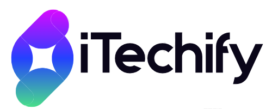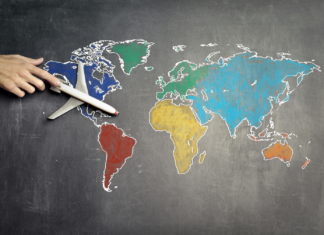It all dates back to May 2019, when the United States government decided to add Huawei to its “Entity List” due to national security concerns. However, the experts suggest it to be a trade market concern as, at that time, Huawei was going head-to-head with Apple and Samsung in smartphone manufacturing. This proves that their smartphones are some of the best in the market. After Huawei was added to the entity list, U.S. companies were prohibited from conducting business with Huawei. Google had to comply with the restrictions. It led to Huawei devices being released without the Google Play Store, Play Services, and several key components and software. The new Huawei devices, such as the Huawei P60 or Huawei Pura 70, no longer support any Google apps or services. In this guide, we will show you how to install Google apps on Huawei Devices running on EMUI 13.1 by using MicroG.
Install Google Apps on Huawei Devices running EMUI 13.1 via MicroG.
The following steps will guide you through installing the Google Play Store and other Google apps, such as YouTube, Google Maps, Gmail, etc., on your Huawei device.
Although there are many steps below, they are simple to follow. First, we will install MicroG, which will enable you to log in to your Google Account. The next step is to log in to your Google account on your Huawei phone. Lastly, we will install AuroraStore to install Google services and apps on your phone.
Download and install Microg on a Huawei Phone:
- First of all, on your phone, open the browser and go to the MicroG website.
- Once open, click on the three stripes (☰) on the top right of the browser.
- Go to Downloads and scroll to the bottom of the page.
- Download Services Framework Proxy.
- You need to download two more files. com.google.android.gms-hw and com.android.vending-hw. Here, hw refers to Huawei.
- After downloading these three files, go to the Download Manager on your Huawei phone.
- Start installing according to the sequence of the downloads:
- First, the android gms apk
- Then, the android vending apk (MicroG Companion)
- Lastly, the android gsf apk (MicroG Services Framework Proxy)
- Install GMS first, then press Done. Next, install the Micro G companion and press Done again after installation. Lastly, install the microG Services Framework Proxy.
Log in to your Google Account on your Huawei phone:
- Open Settings and click on Apps & services.
- Go to Apps.
- Search for microG. Open microG Services and click on the Settings icon. Turn on Google Device Registration, Cloud Messaging,g and Google SafetyNet.
- After that, tap on Self-Check in MicroG Services and check to enable everything listed there. Allow permissions for everything listed there. (If the checkbox is not getting checked, tap on the left side of the checkbox where the text is.)
- Now, in the MicroG Services App. Allow permission to draw over other apps.
- Go back to microG, set the Account, and then click on Account.
- Enter your Google Account details to log in to your Google account.
- After Accounte adds the Account, return to your phone’s Settings menu.
- In the Settings menu, look for “User and Accounts”.
- Select “Google” in User and Account and tap on Legacy Settings. Here, turn on “Allow Apps to Find Accounts.”
Note: When trying to add your Google account to MicroG and logging in, you may encounter an error message stating “Problem Communicating with Google Servers.” Here is a guide on how to fix it.
Install AuroraStore to download and install Google Apps on a Huawei phone running on EMUI 13.1
- Now, the next step is to download Google Apps and Services from the Aurora Store.
- Go to the AuroraOSS website and download the AuroraStore APK (stable).
- Now go back to the downloads manager and install the AuroraStore APK on your Huawei phone.
- Open AuroraStore, tap Next, and then select the suitable installer. In our case, we will select the “Session Installer”. Select the System Theme and Accent according to your liking.
- Now, in AuroraStore, tap on Unverified Links, check the Market Android and Play Google options, and tap on Next.
- Now tap on Installer Permission to grant the permission. This will take you to the settings of “Install apps from external sources.” Here, enable Allow App Installs.
- Now, in the Permissions tab, select the External Storage Manager and tap on Grant. Select the Aurora Store. In the next screen, enable “Allow Access to All Files”.
- Now tap on Finish. Here, you will have three options: You can log in using your Google Account, Anonymously, or Anonymous (insecure). You should either select Google or Anonymous.
- Now, you will see all the apps in the Aurora Store. Here, you need to tap on the Update tab at the bottom right corner. Tap and hold Google Play Services to open its update settings. Tap on Add to Blacklist. It will prevent this app from auto-updating itself, which is crucial when installing and running Google Apps on your Huawei phone. You can update the other apps without any issues.
- The Next Step is to search for Android System WebView in the Aurora Store and install it on your Huawei phone.
That’s all. Now you can download Gmail, YouTube, and Chrome to test if everything is working fine on your Huawei phone. You can see in Google Apps that you are already logged into the account you used with MicroG.
If you have any questions or queries regarding the guide above on how to install Google apps on a Huawei phone running EMUI 13, feel free to drop a comment below or reach out to us.
The Future of Google and Huawei:
In response to U.S. sanctions and restrictions, Huawei has been diligently developing its operating system, HarmonyOS, alongside expanding its AppGallery as a viable alternative to the Google Play Store. This move marks a significant shift in the mobile ecosystem, as Huawei seeks to build an independent platform that can cater to its global user base. However, the lack of Google services remains a significant hurdle, particularly for users who have long relied on the vast selection of apps and seamless integration offered by Google’s ecosystem.
Despite these challenges, Huawei continues to innovate and release new devices, striving to cultivate a robust ecosystem that reduces its dependency on U.S. technologies. The company is investing heavily in R&D, exploring partnerships, and enhancing its software offerings to attract both developers and consumers. However, the path forward is fraught with uncertainty.
The future of Huawei’s relationship with Google, and indeed with other U.S. companies, hinges on the evolving geopolitical landscape and the outcomes of trade negotiations between the U.S. and China. While the current situation presents significant obstacles, it also opens the door to new opportunities. As Huawei continues to build its ecosystem, the company could potentially emerge as a formidable competitor in the global tech arena, offering users a viable alternative to established platforms. The coming years will be crucial in determining whether Huawei can successfully navigate these challenges and redefine its place in the global market.















